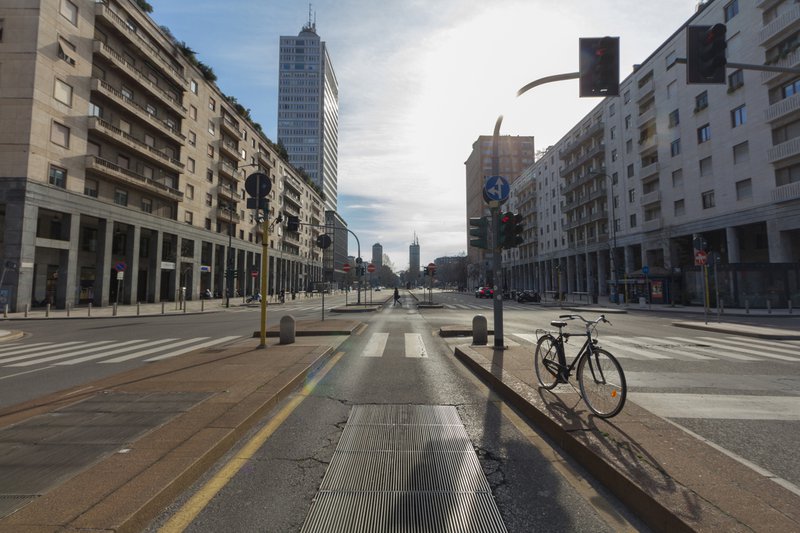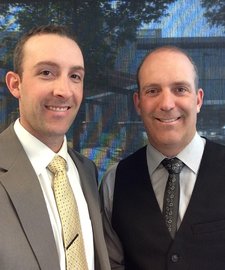
DAVID PARKINSON
Aug. 7, 2020
When Emmanuel Farhi died suddenly two weeks ago at the relatively tender age of 41, the world lost one of its most brilliant economists.
An innovator in our understanding of the global financial system, macroeconomic analysis and fiscal policy, we’ll now never know what the French-born Harvard professor could have accomplished over the span of a full career. Many of his peers have no doubt that a Nobel Prize was in his future.

But one of Dr. Farhi’s final projects could light the path for governments as they try to sustain an economic recovery in the still-long shadow of COVID-19. That research has already produced some important advice: In the event of a second wave of the virus, it would be a mistake to lock down economies again
Dr. Farhi co-authored a paper published by the Brookings Institute less than a month before his death, which introduced a sophisticated model that marries an array of economic and epidemiological factors in a single gauge, to weigh the risks and rewards of policy alternatives from both an economic and a public-health standpoint. The authors – who also include UCLA economist David Baqaee, a former student of Dr. Farhi, as well as two colleagues at Harvard, Michael Mina and James Stock – applied their model to the pivotal question facing governments as they prepare for a possible second wave. Should they shut down the economy again, as they did when the cases surged for the first time in the spring?
The answer was a resounding “no.”
“We find that a second round of economic shutdowns alone are neither sufficient nor necessary to avert or quell a second wave,” the paper says.
“In contrast, non-economic, non-pharmaceutical interventions, such as reintroducing restrictions on social and recreational gatherings, stressing wearing masks and personal distancing, increasing testing and quarantine, and enhancing protections for the elderly and the most vulnerable, together can mitigate a second wave while leaving room for an economic recovery.”
The model analyzes scenarios across five age segments and 66 economic sectors, to try and drill down to how containment measures affect interactions, and how that translates to infections, deaths and economic outcomes. Dr. Baqaee, the lead author of the paper, said that not only does the model provide a more detailed combination of age-specific epidemiology and economic factors than those before it, but it encompasses the role of non-economic interactions that other economic models fail to capture.
“Most other epi-economic models simply assume that all interactions happen in the workplace, and policy is limited to a decision about what fraction of the economy to shut down,” he said in an interview via e-mail.
“We modelled how people in different age groups interact with one another, and whether or not their interactions happen in the workplace. Using contact diaries of how people actually spend their time, we see that many of the risky interactions actually do not take place in the workplace.”
One key conclusion is that keeping schools closed would do more harm, from an economic standpoint, than good, from a public safety standpoint. While the authors acknowledge that school resumption would open an avenue for transmission of the virus, evidence to date indicates that “contacts with children appear to be less effective in spreading the virus than contacts among adults.” As a result, they calculate that public-health benefits of keeping schools closed appear to be relatively small.
However, the economic impact would be more substantial, as closed schools would keep more parents at home, resulting in constrained labour supply and higher unemployment. Not to mention the damage to children’s education, especially the disadvantaged with limited access to online learning.
“So not re-opening schools imposes considerable economic and non-economic costs, while not solving the problem of the second wave,” the paper argues.
The research builds on work Dr. Baqaee and Dr. Farhi have been doing on “aggregation” of microeconomic decisions – i.e. the economic choices made at the individual and household level – to determine how they affect macroeconomic outcomes, the big-picture stuff like gross domestic product growth. The idea is to capture the range of responses to policy alternatives among the many diverse players who make up the economy, and combine those data to gauge the impact on the broader economy.
“Once the COVID crisis began, Emmanuel desperately wanted to do what he could to help, and he believed that the research we had been working on was useful,” Dr. Baqaee said. “He was deeply passionate about the work we were doing, and he told me that it could end up transforming the way macroeconomics is done.”
Sadly, much of that work has been left unfinished. Dr. Baqaee said he and Dr. Farhi had eight other projects on the go, including two more papers addressing COVID-19 issues.
But more importantly, he lost his mentor and friend.
“Emmanuel was the best of us. Not only one of the most brilliant economic minds of his generation, but also one of the kindest and most gentle souls I have ever known. I am sorry that I won’t have the opportunity to learn from him in the future. I will always cherish the time I spent with him.”
This Globe and Mail article was legally licensed by AdvisorStream.
© Copyright 2024 The Globe and Mail Inc. All rights reserved.


